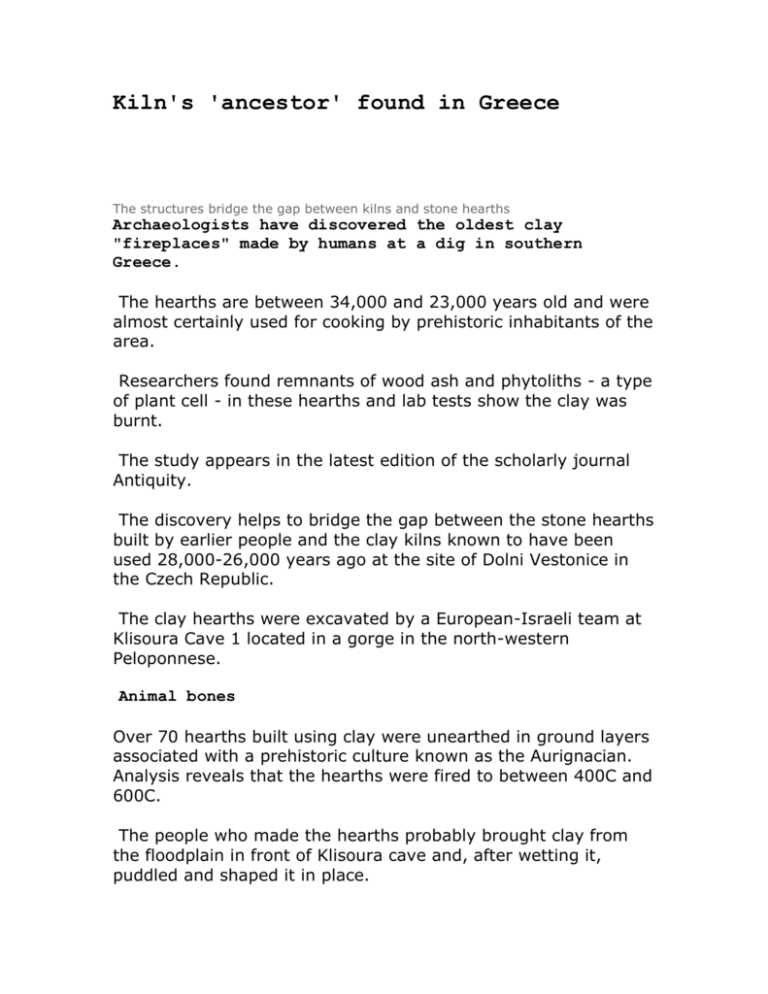Kiln - Quatr.us
advertisement

Kiln's 'ancestor' found in Greece The structures bridge the gap between kilns and stone hearths Archaeologists have discovered the oldest clay "fireplaces" made by humans at a dig in southern Greece. The hearths are between 34,000 and 23,000 years old and were almost certainly used for cooking by prehistoric inhabitants of the area. Researchers found remnants of wood ash and phytoliths - a type of plant cell - in these hearths and lab tests show the clay was burnt. The study appears in the latest edition of the scholarly journal Antiquity. The discovery helps to bridge the gap between the stone hearths built by earlier people and the clay kilns known to have been used 28,000-26,000 years ago at the site of Dolni Vestonice in the Czech Republic. The clay hearths were excavated by a European-Israeli team at Klisoura Cave 1 located in a gorge in the north-western Peloponnese. Animal bones Over 70 hearths built using clay were unearthed in ground layers associated with a prehistoric culture known as the Aurignacian. Analysis reveals that the hearths were fired to between 400C and 600C. The people who made the hearths probably brought clay from the floodplain in front of Klisoura cave and, after wetting it, puddled and shaped it in place. The hearths are made of clay brought from a river floodplain At Dolni Vestonice, archaeologists have found evidence of prehistoric hunter-gatherers using kilns to fire clay figurines. The researchers also found burnt animal bones associated with the clay structures, which include the remains of fallow deer, hare, rock partridge and great bustard. They also found burnt seeds from edible plants such as goosefoot and the fruit of knotgrass, although it was not possible to tell if these were deliberately cooked or if they were burnt in natural fires. Until now, there had been precious little evidence of the transition from the stone hearths in the Middle Palaeolithic to the advanced technology used in Central Europe by 28,000 years ago.


![[1.1] Prehistoric Origins Work Sheet](http://s3.studylib.net/store/data/006616577_1-747248a348beda0bf6c418ebdaed3459-300x300.png)





